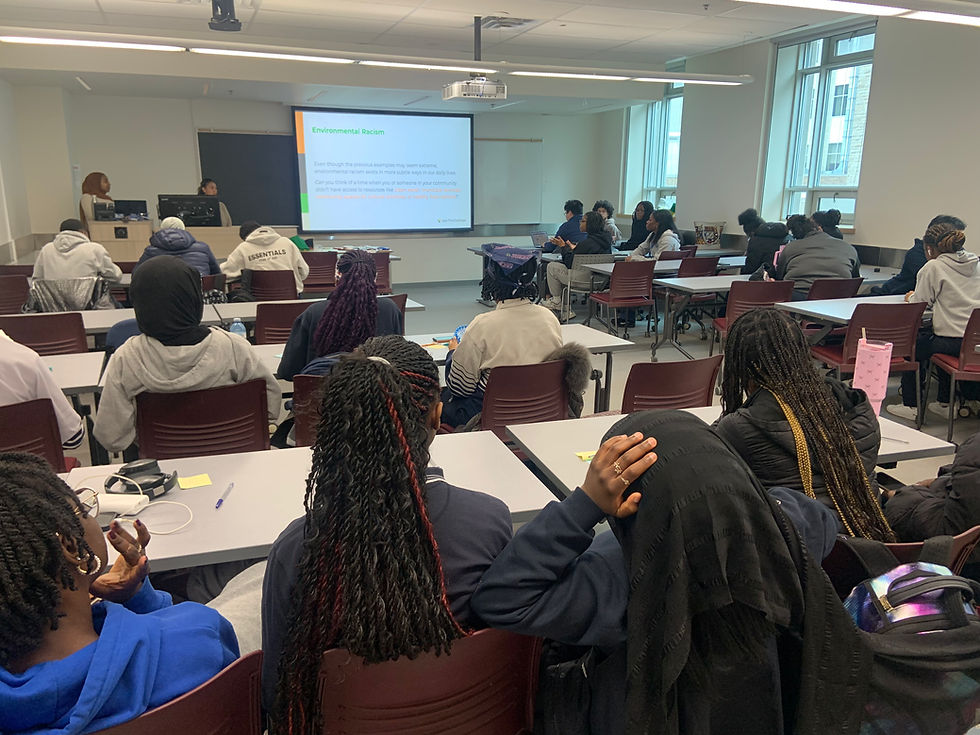Diversity is the new driver of creative design
- Andrea Hemmerich

- Oct 18, 2019
- 3 min read
I am not alone in having zigzagged in and out of traditional science, technology, engineering, and math (STEM) occupations because of my varied interests and values. I often struggle to combine my interest in meaningful, creative work with the satisfaction of achieving a technical challenge, while also fulfilling my ambition to improve the world we live in. Lofty goals, I know! However, I believe my understanding of broader societal contexts has improved my effectiveness as an engineer and researcher. I am gratified to now see the emerging trend in educational practices that reflect young people’s interests in both #STEM and social justice issues.

Such inclusive approaches to education are still not the norm, however, and many students who have the potential to excel at math and science are choosing to pursue opportunities in other fields. Within the STEM fields, we acknowledge that disciplinary culture often creates a barrier to increased diversity. It is not only our biases — either overt or unconscious — that suggest to women and minoritized students that they don’t fit in, but also the prioritization of technical knowledge over ‘soft’ skills — skills that are perceived as less important or even requiring less intelligence — that creates this unwelcoming culture. Our traditional competencies in the STEM fields conflict with the deeper values and aspirations of many students who, accordingly, choose a career path in the arts, humanities or social sciences.
At UP4 The Challenge we are creating a new STEM culture: one that is inclusive of all, not just in terms of outward appearances, but also with regard to our core values and unique, personal perspectives. We are showing young people that our capacity to connect with others is a vitally important part of innovation and that by pursuing a career in STEM they have the potential to create remarkable social and environmental impact. By actively engaging our program participants in the human-centred design process, they learn that communication and creativity are required alongside technical skills to be an effective scientist or engineer.
Within our design thinking program, we encourage participants to create a solution to a specific human-centred problem, rather than challenging them to design a piece of technology. In fact, the initial part of this process emphasizes learning about others’ experiences through questioning, active listening, and reflection. Once they have discovered new insights related to their users’ needs and motivations, our designers brainstorm a broad range of ideas to address their particular challenge. This ideation process again highlights for the participants that their own unique experiences can inspire imaginative concepts — in other words, their diversity is an asset.
By recognizing the benefits of their diverse skills and knowledge in the design process, our UP4 The Challenge participants learn that they should not simply be tolerated in the STEM fields but are invaluable when it comes to creating innovative change. Furthermore, our program provides a broader understanding of what science, technology, engineering, and math careers involve: creative problem-solving with a capacity for social impact. When asked, our participants have consistently agreed that they are more interested in STEM at the end of our program. And as long as we continue to foster their interests — not just the technical, but also the broader, human-centred values — we can transform STEM towards a more inclusive disciplinary culture.
As a woman in engineering, I have investigated ideas that may seem trivial or unsuitable to those who don’t initially ‘get it,’ for example, understanding the mechanics of birth positioning to support a woman’s choice during childbirth. It is incredibly rewarding when I receive feedback — from both women and men — that this kind of work is valuable to them.
So, how have YOU benefited from your diversity (in terms of your background, experiences, or interests) in the STEM fields?







Comments